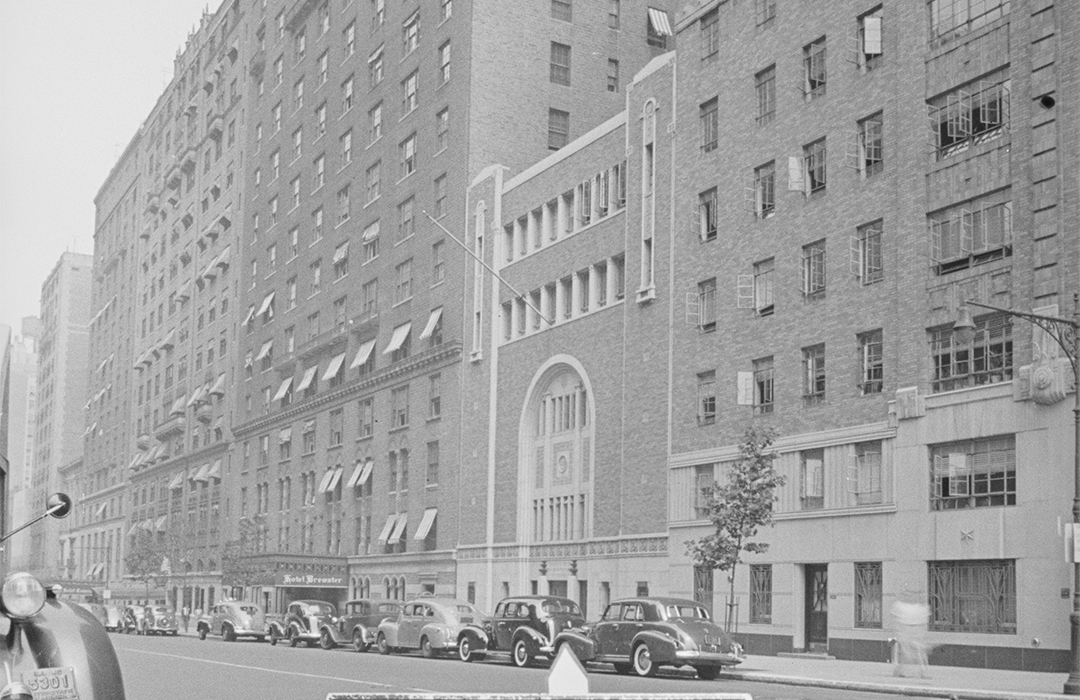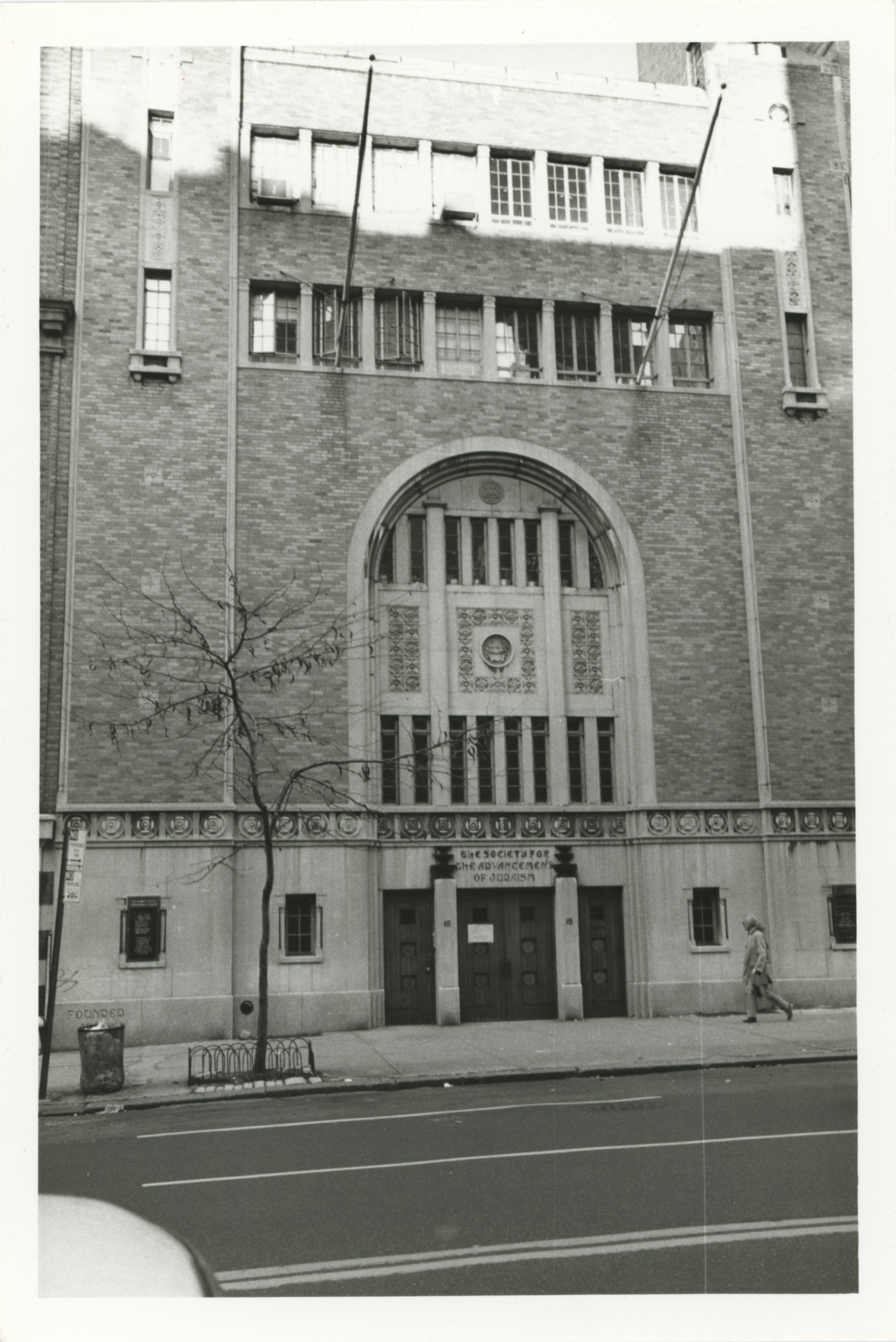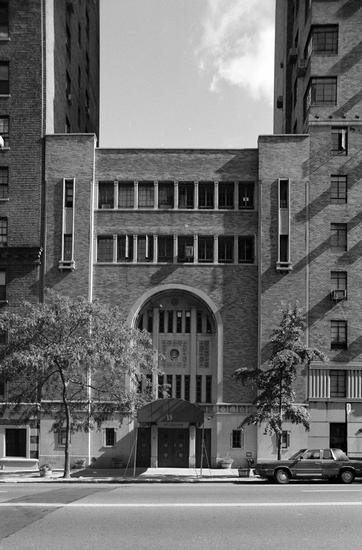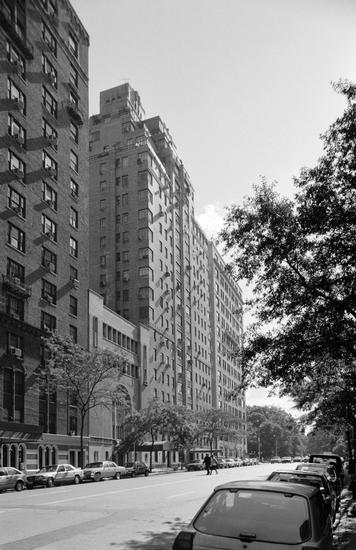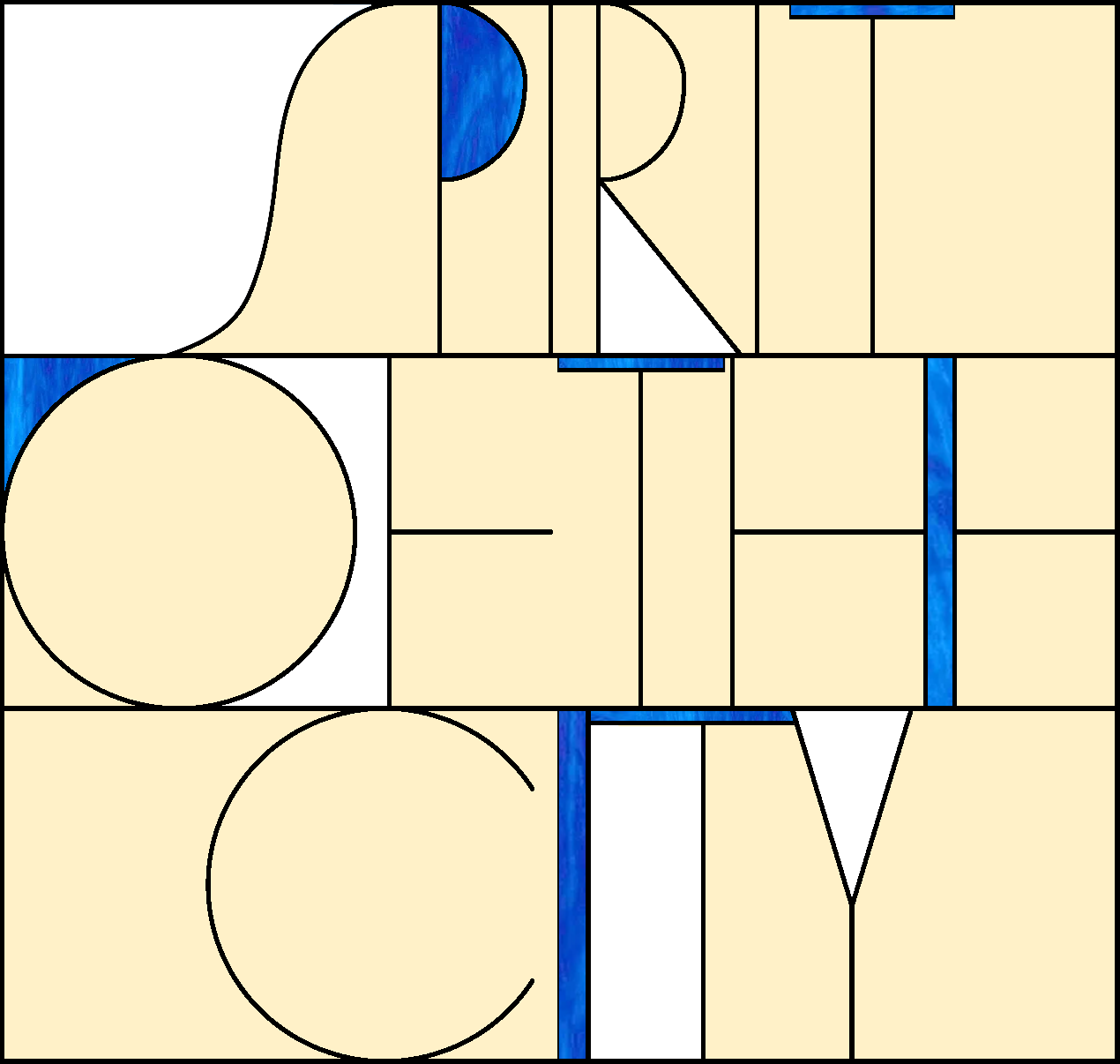
The Society for the Advancement of Judaism
15 West 86th Street
by Tom Miller
Beginning in the 1890s, the two high-stooped brownstones at 13 and 15 West 86th Street were operated jointly as Mrs. Leslie Morgan’s Boarding and Day School for Girls. The private school would remain in the connected houses into the 1900s. They were purchased by the Society for the Advancement of Judaism in January 1925.
The Society had been founded by Rabbi Mordecai M. Kaplan three years earlier “on the premise that Judaism ought to be fluid, with rituals and customs changing in modern times,” according to Newsday decades later. Accordingly, Kaplan had shocked mainstream Orthodox Jews when, on March 18, 1922, he presided over the bat mitzvah of his daughter Judith—the first bat mitzvah in America.
The congregation set to work renovating the school into a synagogue, and on December 18, 1925, The American Hebrew reported, “The new S. A. J. House at 15 West Eighty-sixth street, New York, has been completed. On Shabbus Chanukkah, December 12, during the Sabbath morning services, a dedication service was included.” The article noted, “This Society is dedicated to the purpose of making Judaism function.”
The building provided a venue for a variety of events. On April 8, 1926, The Jewish Daily News reported, “Large numbers of Young Judaea leaders from many cities within a day’s travel from New York will attend the national leadership conference which will open Saturday evening with a Jewish Young Evening at the Society for the Advancement of Judaism.” And in reporting on the Young People’s League convention the following year, the newspaper noted the program, “includes a round table discussion at the Society for the Advancement of Judaism.”
“This Society is dedicated to the purpose of making Judaism function.”
Rabbi Kaplan’s calls for change were sometimes bitterly controversial. Writing in The Jewish Daily News on October 14, 1927, I. L. Bril railed against Kaplan’s proposal that the Kol Nidrei be eliminated from the Society’s Yom Kipper service. Bril charged,
He would want all the other Jews to believe that he and his small group worshipping on West Eighty-sixth Street, New York City, are the only sincere Jews in the entire world and that all others who recite the Kol Nidrei are rank hypocrites. This is unadulterated chutzpah.
Despite the controversies, the Society for the Advancement of Judaism grew. By 1928, it was publishing the S.A.J. Review, which described itself saying, “This weekly periodical, edited by Prof. Mordecai M. Kaplan, is devoted to the free expression of Judaism as a modern religious civilization. A magazine for the thoughtful layman and leader.”
The Society building was, as well, a cultural center. In May 1934, for instance, an exhibition of the paintings of Shalamith Wittenberg, was held here. The Jewish Telegraphic Agency called the artist the “first native Palestinian to exhibit here.” And a year later, a concert titled “Jewish Life in Yiddish Song,” was performed on May 15, 1935. “The program will consist of songs in Yiddish and in Hebrew,” said The Jewish Telegraphic Agency.
After operating from the renovated houses-turned-school for 13 years, in 1938, the congregation hired architect Albert Goldhammer to reconstruct the building. The mixed-use structure (it housed the synagogue and school rooms, as well as apartments for persons affiliated with the Society) was clad in warm orange brick above a one-story cast stone base. Described by at least one architectural historian as “Modern Semitic” in style, its design was dominated by a two-story central arch.
The S. A. J. building continued its tradition of cultural activities. Art exhibitions were a staple. On December 17, 1950, The New York Times reported, “An exhibition of more than 100 paintings brought from Israel recently to acquaint Americans with the development of the new country and its scenic aspects, will open today in the quarters of the Society for the Advancement of Judaism.” The art exhibitions were interspersed with lectures and group discussions—like the workshop headed by Dr. Arlene Richards on April 4, 1976, titled, “Afraid of Marriage or Afraid of Divorce?”
Mordecai M. Kaplan was indefatigable. On November 22, 1964, at the age of 83, he was honored at the dinner at the Pierre Hotel to celebrate the Society’s 25th anniversary. In addition to his work with the Society, he was professor of Philosophies of Religion at the Jewish Theological Seminary of America. Additionally, according to The New York Times, he “keeps up an active participation in 10 Jewish congregations and nine religious study groups in the country that are officially part of the Reconstructionist movement.”
art exhibitions were interspersed with lectures and group discussions
The newspaper did not dance around Kaplan’s often contentious stands. “For many years he has been a controversial figure in Jewish religious circles, particularly among the Orthodox, or traditional, interpreters of Judaism, who oppose his espousal of a ‘Jewish religious civilization that is based on naturalism and not supernaturalism,’ said the article.”
Seventeen years later, Kaplan was the guest of honor at another celebration—his 100th birthday. Newsday reported on June 8, 1981, “The consul general of Israel, Chaim Rosenthal, and City Controller Harrison J. Goldin were among those attending.” Kaplan was presented a scroll signed by 200 rabbis who had been influenced by his teachings. He told the gathering, “The greatest tribute you can pay me…is to carry on the work that we have begun.”
Rabbi Mordecai M. Kaplan died on November 8, 1963, at the age of 102. In reporting his death, The New York Times called him, “a towering figure in the recent history of Judaism.”
Kaplan’s hope that his work would be carried on was fulfilled. The Society for the Advancement of Judaism continues to be a cultural center. On June 2, 1989, Newsday reported that a Yiddish poetry reading would be held in the auditorium that day, and in March 1990 the Society hosted a Pre-Passover concert for families titled, “Mostly Matzah.” It featured Jewish folk music for ages three to ten.
Serious discussion groups, too, continue at the Society headquarters. On October 19, 1993, a lecture titled “Jewish Parents of Gay and Lesbian Children” was held here. The Society’s webpage recalls that since 1922, “it has been reconstructing Judaism, wrestling with God, questioning tradition and expanding its boundaries to ensure that Torah remains relevant, engaging, and welcoming to all.”
Tom Miller is a social historian and blogger at daytoninmanhattan.blogspot.com
Building Database
Be a part of history!
Stay local to support the nonprofit currently at 15 West 86th Street:

